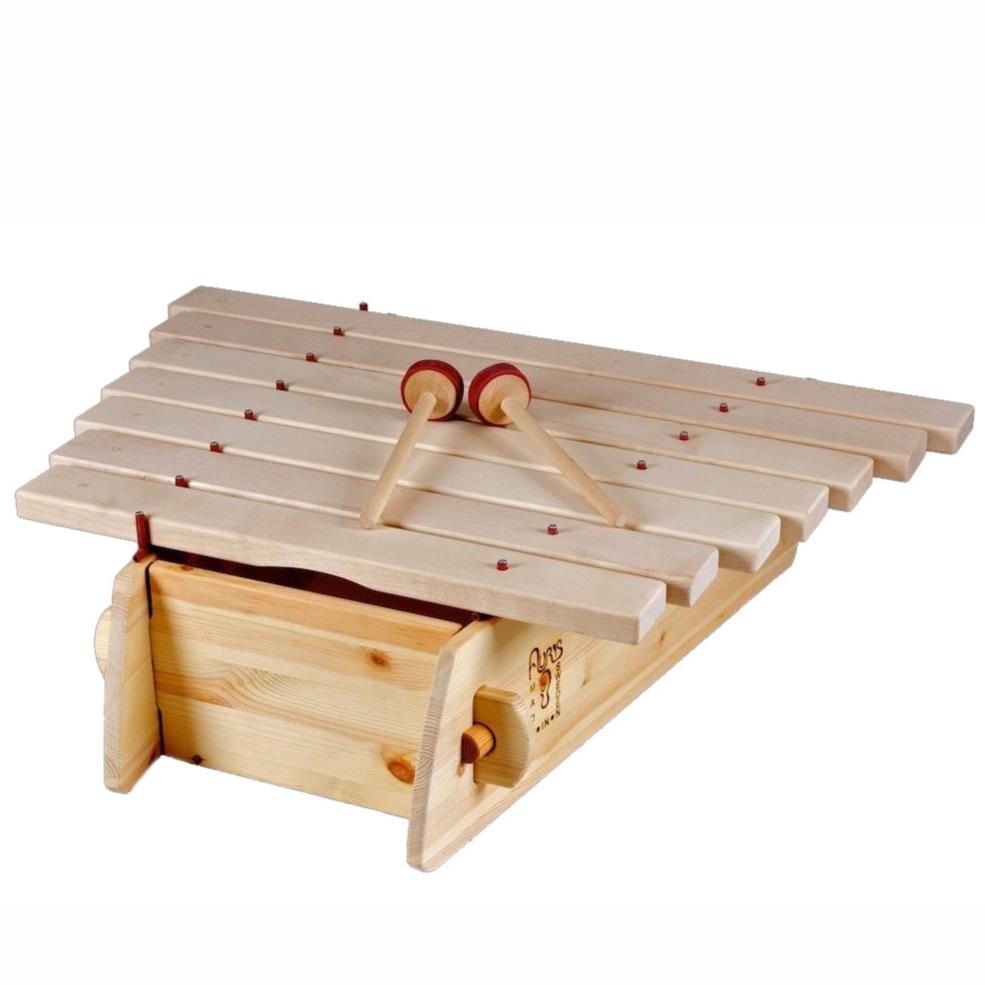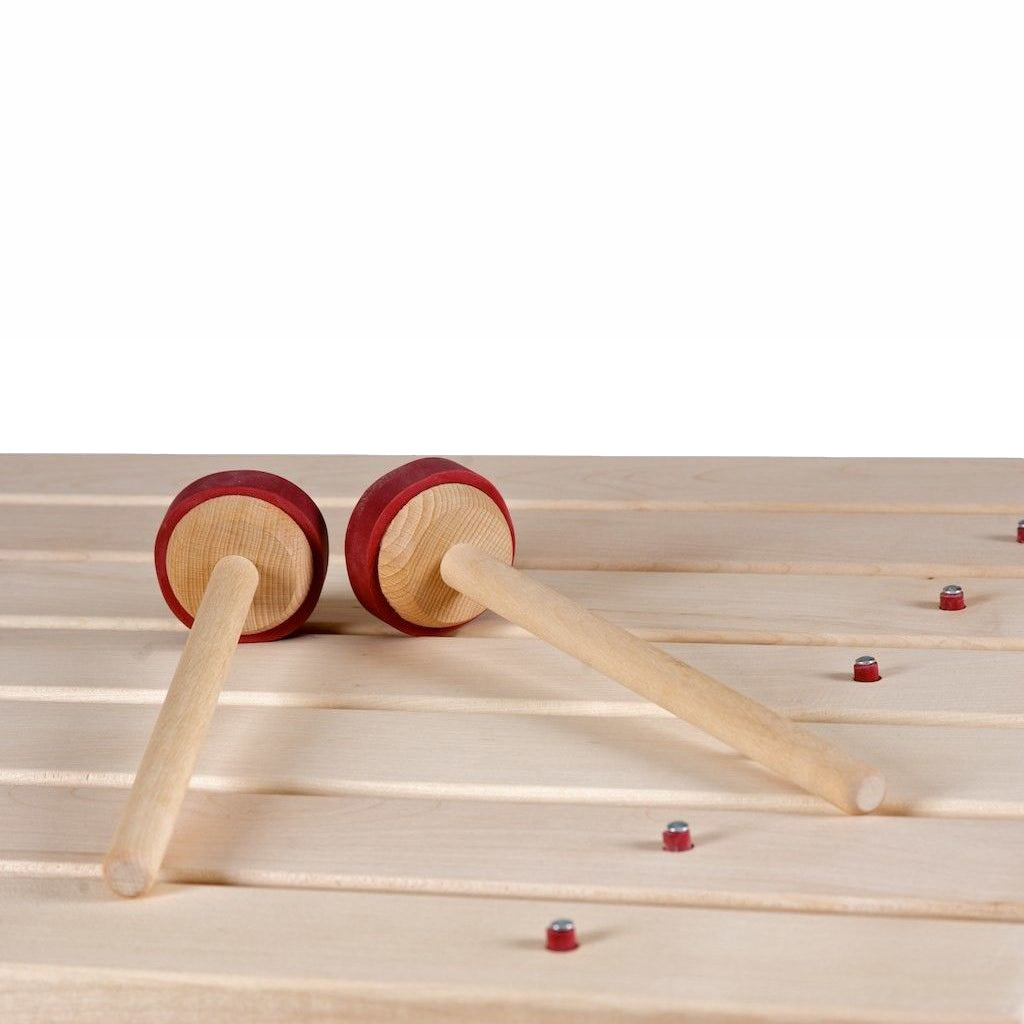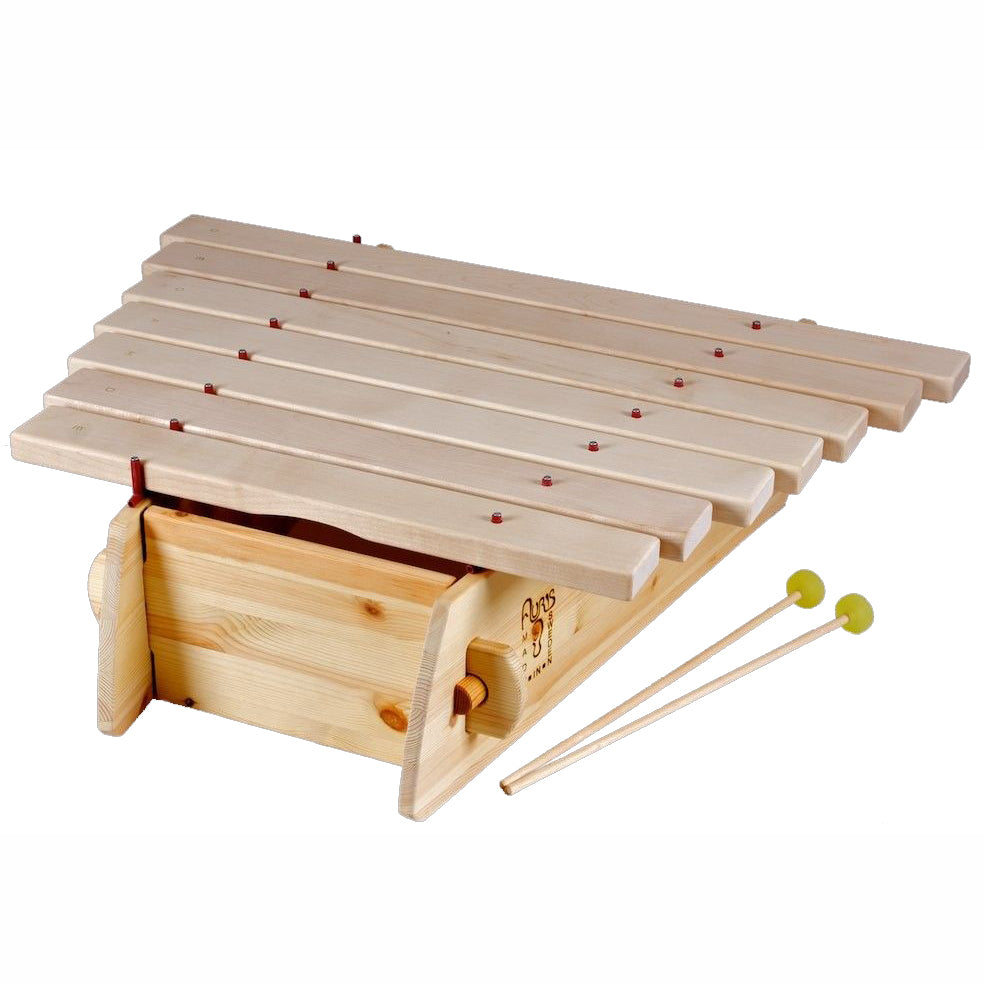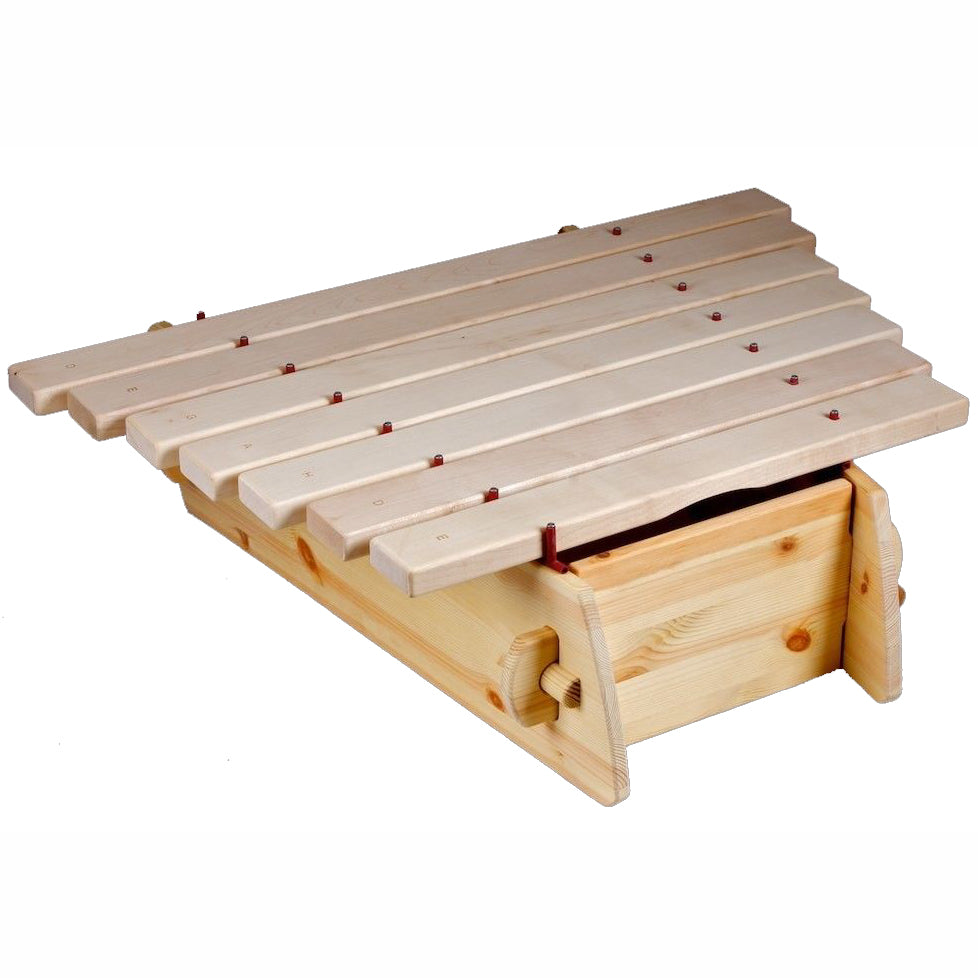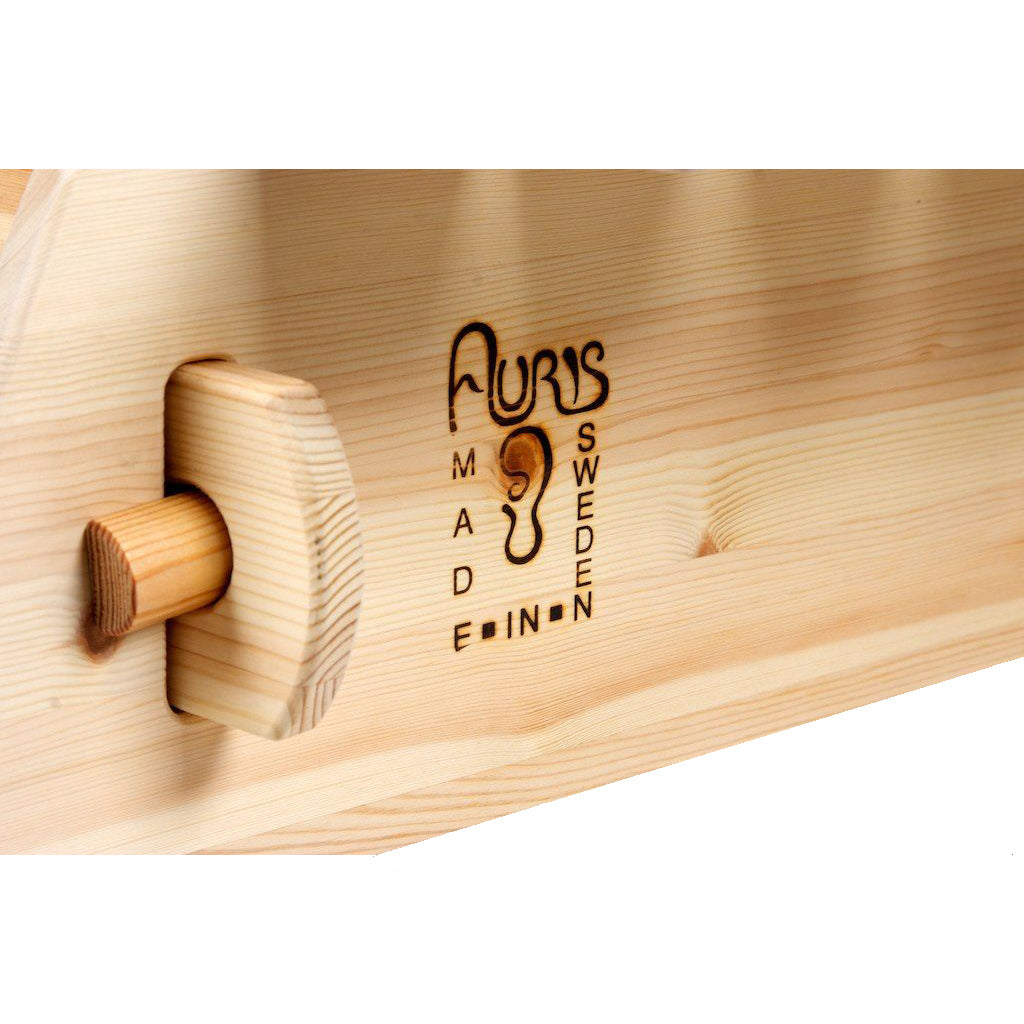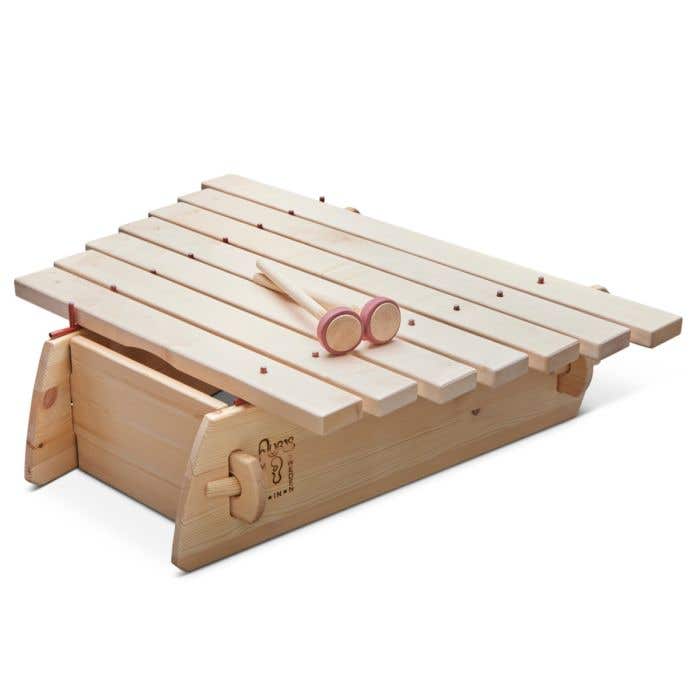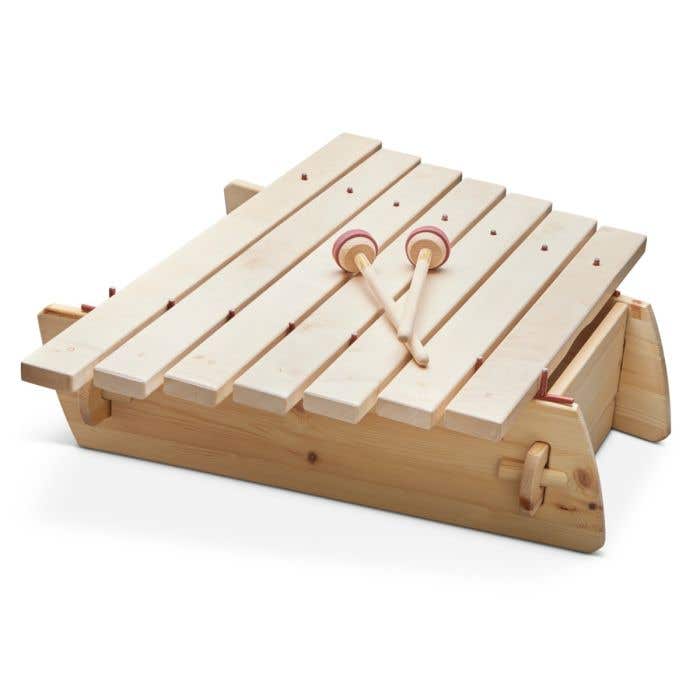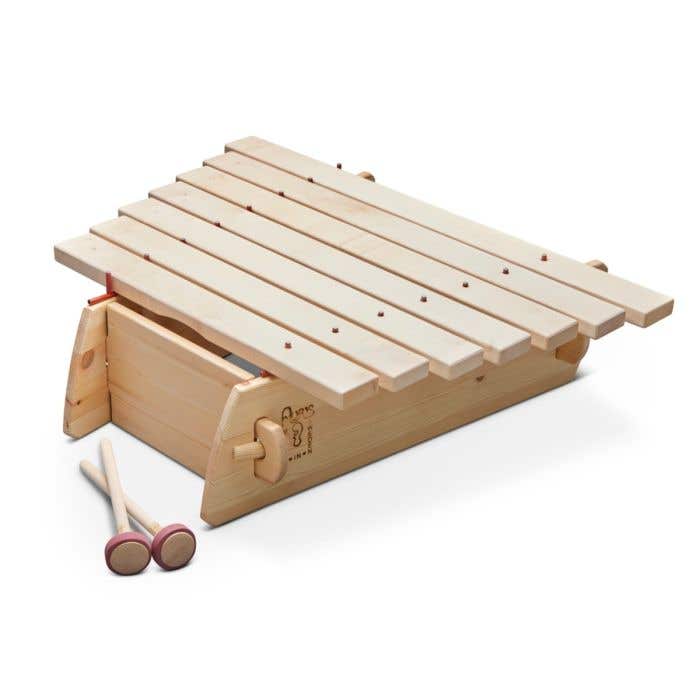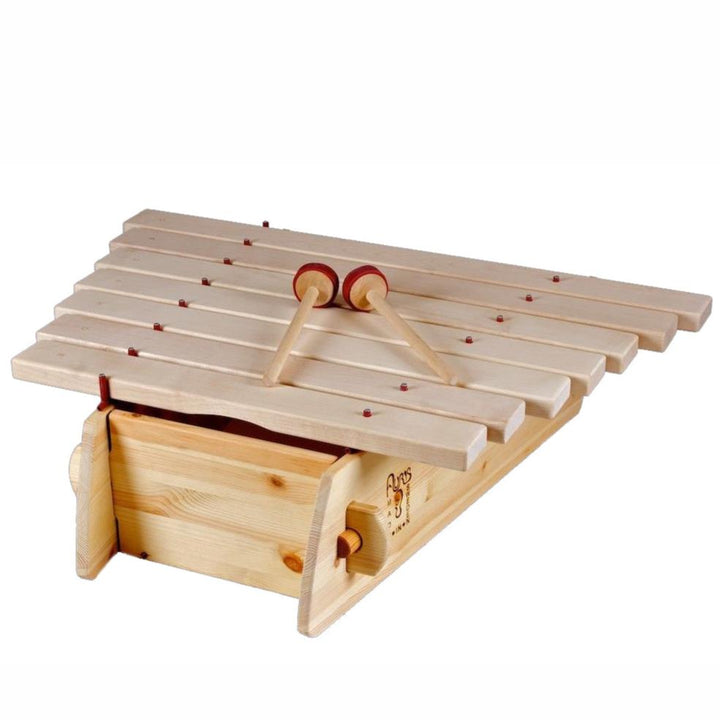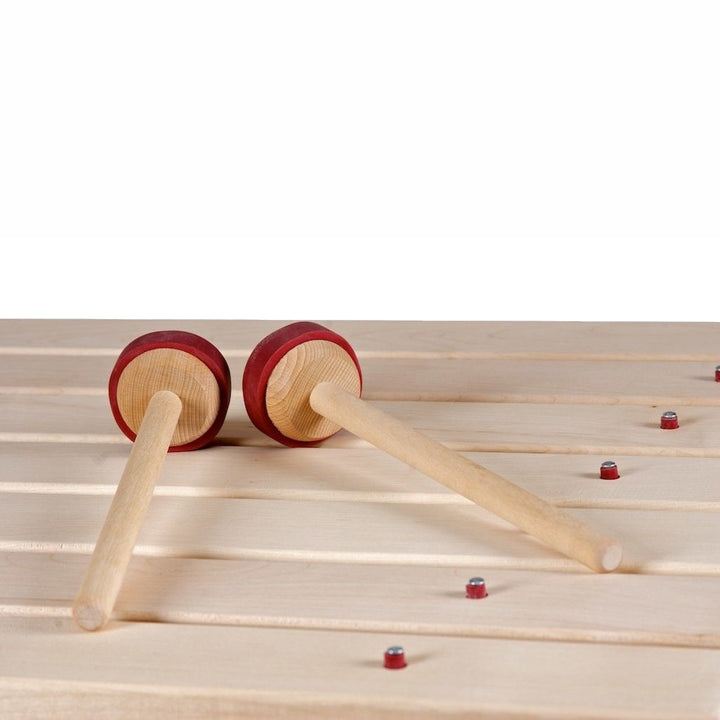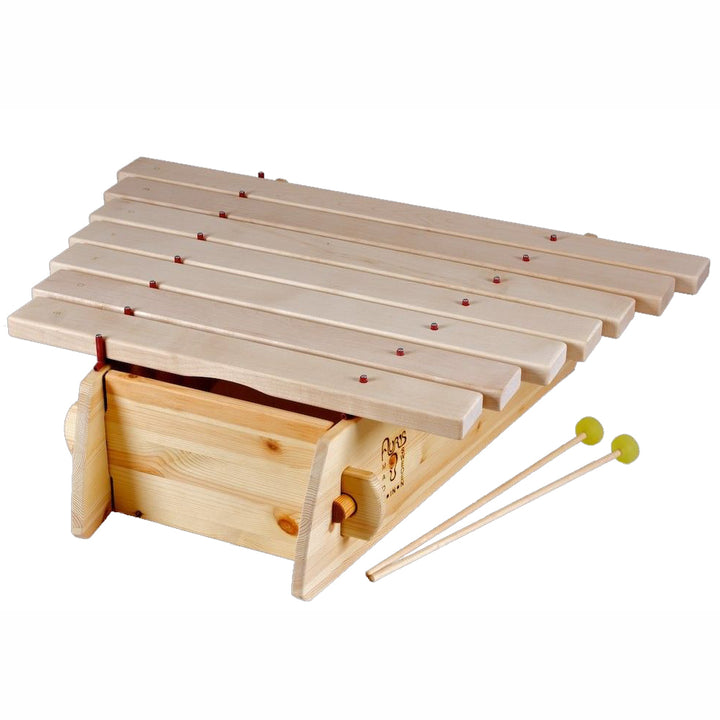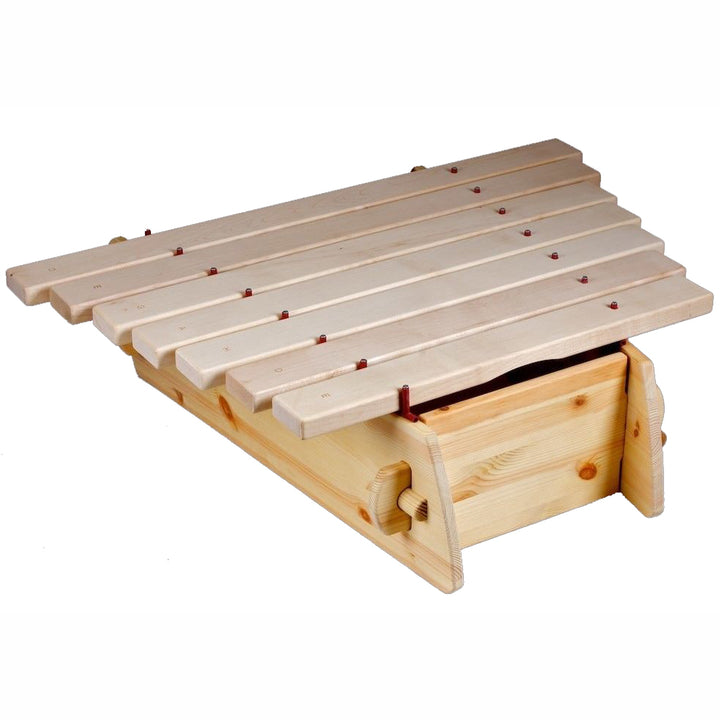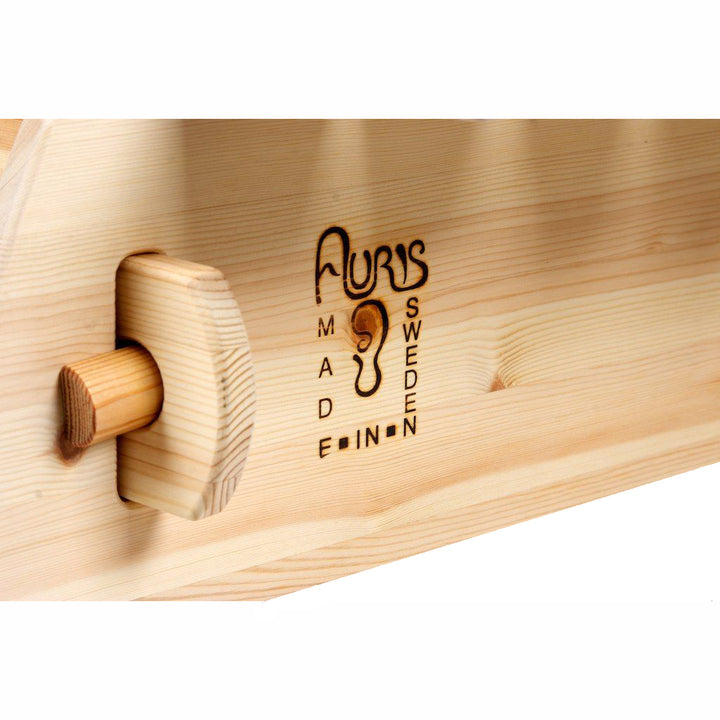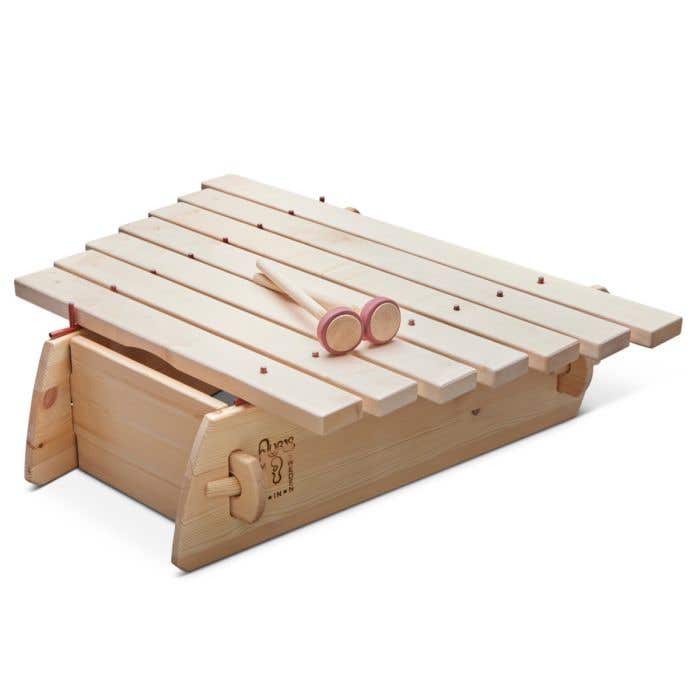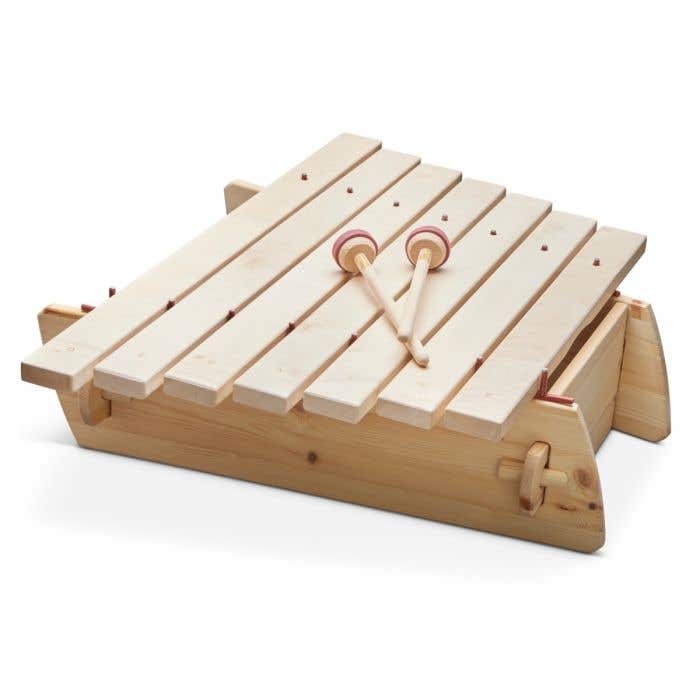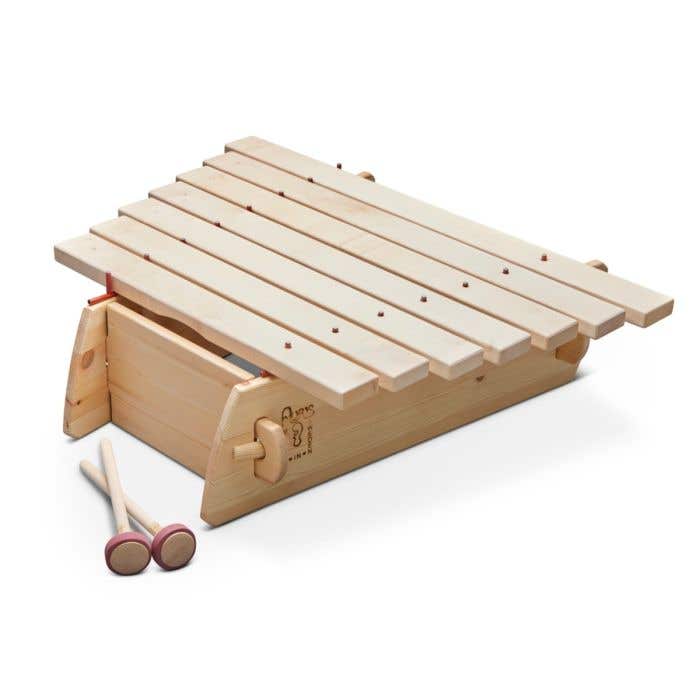Auris Marimba Amadinda
- Low stock - 1 item left
- Ships within 72 hours
The Auris version of the Amadinda with its extra long tone bars of maple wood was designed to create a special sound rich in overtones with a warm deep bottom. This sound is almost metallic and invites to a playful melodic and rhythmic music.
Maple wood plates, pine wood frame, 7 tones, diatonic, 2 mallets, range: d-e-g-a-h-d’-e’
Made in Sweden by Auris.
In the words of Kjell Anderson from Auris:
AMADINDA – the African word is an onomatopoetic which means that it imitates the sound of what it describes : "AMA" means "wood" and "DINDA" is an imitation of how the instrument sounds, it is an African word. Africa is the origin of the Amadinda and it is played by an extreme small grown Pygmy people and is in its African form quite a bit larger than the Swedish Auris relative
The Auris Amadinda with its extra long tone bars (56-80 cm) in maple wood, designed to create a special sound rich in overtones with a warm deep bottom. This sound is almost metallic and invites to a playful melodic and rhythmic music. We deliver the Amadinda with seven keys (d-e-g-a-h-d’-e’) if yo add optional keys c and f you can compose differens scales with nine bars of which seven can be played at a time. Which gives you the opportunity to create more than 20 variations of the scale. Semitones for even more scales can be ordered separately. With each Amadinda goes a pair of rubber mallets. The Amadinda is also my personal favourite among the Auris Xylophones.
The instruments can be used in the most different situations, from musical fun playing with children up to professional orchestral use. The different types are fully compatible and are with their sound characters complimentary to each other. You can for instance play an underlying rhythmical bass figure on the big Amadinda and on top of that an improvised melody on the little pentatonic Xylophone XRP-007 or with the Marimba XPL-008.
The shape of the Amadinda and Marimba boxes has a strong connection to old Swedish furniture craftsmanship. The collapsible box made out of Swedish pine with its wedges are inspired by old rustic tables, traditionally built and used by the farmers on the Swedish countryside. On the Auris instruments, this system has been optimised. By putting a piece of rubber inside the box edge, the construction becomes much more flexible and can be moved around without the wedges falling out. The box is easy to build up and take apart, which makes it very practical by transportation.
The story about the travelling Amadinda
There is a wonderful story about one of our Amadindas. In the middle of the eighties I was making music together with a black man from Namibia. He had fled his country many years ago for political reasons. He was one of the founder of the liberation movement SWAPO, who wanted to liberate their country from the racist regime. His name is Taona Ngongo. So after many years as refuge in Sweden he decided that he wanted to go back to Namibia and the Kalahari dessert were he was born.
During the time in Sweden his major occupation had been to play, sing and explain about African music to Swedish people. He held hundreds of concerts and workshops, in schools, kindergartens and museums were he often used the Auris Amadinda. When he left for Africa he asked me if I could give him an Amadinda to play the music for his own people. I gave him one to bring along on the trip. Once there he sadly found that his own tribal folks did not play the old music any more. So he took the Auris Amadinda and started to play again and everybody became very happy. Old people started to remember and the young learned anew.
When it was time for him to leave and go back to Sweden again he was asked to leave something behind so that they would not forget nor him or the music he gave back to them. Taona then decided to leave the Auris Amadinda in his home village and there I suppose it still is this very day.
Functionality
The shape of the Amadinda box has a strong connection to old Swedish craftsmanship. The collapsible box made out of Swedish fur tree with its wedges are inspired by old Scandinavian joint methods for fast assembly of things used in the ancient rural society. On the Auris instruments, this system has been optimised. By putting a piece of rubber inside the box edge, the construction becomes much more flexible and can be moved around without the wedges falling out. The box is easy to build up and take apart, which makes it very practical to transport.
The Auris Xylophones has been sold in around 20 different countries since we started making them back in 1986.
The Amadinda is also my personal favourite among the Auris Xylophones.
We wish you a lot of fun in playing the Amadinda.
Auris Musikinstrument
Kjell Andersson


